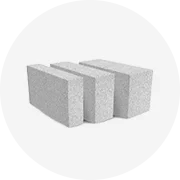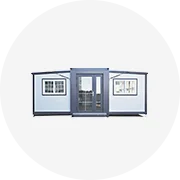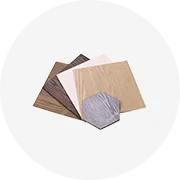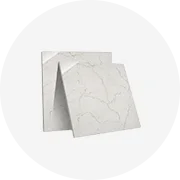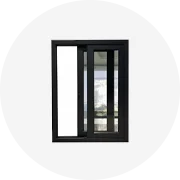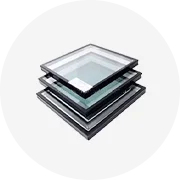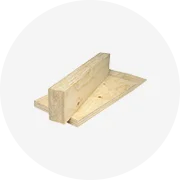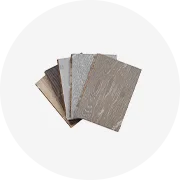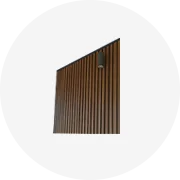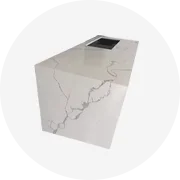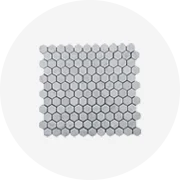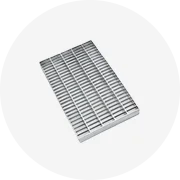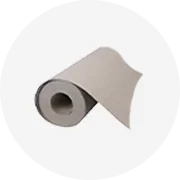Types of PVC Header Pipe
A PVC header pipe is a specialized plastic pipe made from polyvinyl chloride (PVC), engineered for various plumbing and water transportation applications. These pipes are manufactured in different sizes and thicknesses to accommodate diverse industrial and residential requirements. Understanding the different types helps in making informed decisions for specific applications.
Schedule 40 PVC
The most common and widely used type with thinner walls, making them lightweight and easier to handle.
Best for: Plumbing systems, irrigation, drainage, and water distribution
Max Temperature: 60°C (140°F)
Schedule 80 PVC
Features thicker walls than Schedule 40, providing enhanced strength, durability, and pressure resistance.
Best for: Industrial plumbing, chemical processing, water treatment
Key benefit: Superior pressure resistance
Structural PVC
Specifically designed for structural applications with enhanced load-bearing capabilities.
Best for: Building frameworks, support systems, agriculture, aquaculture
Key benefit: Corrosion resistance and low maintenance
HDPE PVC
Features a smooth inner surface that minimizes friction loss for efficient fluid transport.
Best for: High-flow applications, water distribution, irrigation networks
Key benefit: Optimal flow efficiency
Expert Tip: When selecting between Schedule 40 and Schedule 80 PVC pipes, remember that while they share the same outside diameter, Schedule 80 has thicker walls resulting in a smaller inside diameter. This affects flow rates and pressure calculations for your system design.
| PVC Type | Wall Thickness | Pressure Rating | Primary Applications | Cost |
|---|---|---|---|---|
| Schedule 40 | Standard | Medium | Residential plumbing, irrigation | $ |
| Schedule 80 | Heavy | High | Industrial, chemical processing | $$ |
| Structural | Reinforced | Medium-High | Construction, framework | $$$ |
| HDPE | Variable | Medium-High | High-flow systems, water distribution | $$ |
Specifications and Maintenance of PVC Header Pipe
Key Specifications
| Specification | Description | Importance |
|---|---|---|
| Size and Diameter | Measured in nominal bore (NB) or diameter (D), available in various thickness variations | Determines flow capacity and compatibility with fittings |
| Pressure Rating | Indicates maximum pressure the pipe can withstand without failure | Critical for system safety and performance |
| Fittings and Connections | Compatible components include sockets, tees, flanges, and elbows | Ensures secure connections between pipes and components |
| Length | Pipes come in standardized lengths for easier transport and handling | Affects installation planning and waste reduction |
Professional Insight: When designing a PVC header pipe system, the sum of all friction losses (including pipe friction, fittings, valves, and elevation changes) should be calculated to ensure the system will operate efficiently. Schedule 80 pipes, while stronger, create more friction than Schedule 40 pipes due to their smaller internal diameter.
Essential Maintenance Practices
Proper maintenance extends the lifespan of PVC header pipes and ensures optimal performance. Implement these best practices:
Regular Inspection
Visually inspect pipes for signs of wear, damage, or leaks. Look for discoloration, cracks, or deformation that might indicate problems.
Frequency: Monthly and after extreme weather events
Cleaning
Remove buildup or debris using a soft-bristle brush and mild soapy water. Avoid abrasive cleaners that can damage the pipe surface.
Frequency: Quarterly or as needed
Joint Inspection
Check fittings and joints for leaks, damage, or wear. Ensure connections remain secure and tight to prevent water loss.
Frequency: Quarterly
UV Protection
Verify protective coating remains intact to shield pipes from sunlight exposure which can degrade PVC over time.
Frequency: Annually or when damage is noticed
Warning: PVC pipes can become brittle when exposed to prolonged UV radiation. For outdoor installations, use UV-resistant PVC or apply protective coatings to prevent premature degradation and potential system failure.
How to Choose PVC Header Pipe
Selecting the right PVC header pipe requires careful consideration of multiple factors to ensure optimal performance, durability, and cost-effectiveness for your specific application.
| Selection Factor | Considerations | Impact on Choice |
|---|---|---|
| Project Requirements | Purpose (water distribution, drainage, chemical transport) | Determines appropriate size, diameter, and PVC type |
| Fluid Characteristics | Temperature, chemical composition, corrosiveness | Influences material selection for chemical resistance |
| Pressure Requirements | Operating pressure of the system | Determines required pressure rating (Schedule 40 vs 80) |
| Size and Diameter | Flow rate needs, pressure constraints, space limitations | Affects flow capacity, pressure loss, and installation space |
| Compliance Standards | Industry standards, local regulations, code requirements | Ensures legal compliance and system certification |
| Installation Complexity | Required fittings, tools, adhesives, installation expertise | Influences overall project timeline and labor costs |
| Long-term Durability | Resistance to corrosion, environmental factors, UV exposure | Impacts maintenance requirements and system longevity |
| Budget Constraints | Initial costs vs. long-term operating expenses | Balances quality, durability, and affordability |
Cost-Saving Tip: When budget is a concern, consider using Schedule 40 PVC for most of your system and Schedule 80 only at critical points where extra strength is needed, such as high-pressure areas or where the pipe might be subject to physical damage. This hybrid approach can optimize both performance and cost.
How to DIY and Replace PVC Header Pipe
Replacing a PVC header pipe is a manageable DIY project with the right tools, materials, and approach. Follow this step-by-step guide for a successful installation:
Tools and Materials Needed:
- PVC pipe cutter or hacksaw
- Measuring tape
- PVC primer and cement
- Replacement PVC header pipe
- Appropriate fittings
- Clean cloth
- Safety glasses and gloves
Installation Process:
-
Shut Down the System
Turn off the water supply and drain the system completely to prevent water from flowing and creating a wet workspace. Open any downstream outlets to release pressure and empty the pipes.
-
Remove the Old Header Pipe
Using a PVC pipe cutter or hacksaw, carefully cut the old header pipe. Make clean cuts to avoid damaging surrounding pipes or fittings. Remove the old pipe sections and clean any remaining adhesive from fittings if they will be reused.
-
Prepare the New Header Pipe
Measure carefully and cut the new header pipe to the appropriate length. Allow for insertion depth into fittings. Test fit all components before applying any adhesive to ensure proper alignment and fit.
-
Connect the New Header Pipe
Apply PVC primer to both the pipe ends and inside of the fittings to clean and soften the surfaces. Then apply PVC cement to the same areas. Quickly insert the pipe into the fittings with a quarter-turn motion to ensure even cement distribution and a strong bond.
-
Inspect the Connections
Visually examine all connections to ensure they're properly seated and bonded. Wipe away excess cement with a clean cloth. Allow the cement to cure according to manufacturer's instructions (typically 15-30 minutes for handling strength, 24 hours for full pressure resistance).
-
Test the System
Slowly turn the water supply back on and check for leaks. Begin with low pressure and gradually increase to normal operating pressure. Inspect all joints and connections for any signs of leakage.
-
Final Verification
Once the system is back to normal operation, recheck all connections for leaks or issues after 24 hours to ensure complete curing has occurred and the system is functioning properly.
Important Safety Notice: PVC cement and primer contain volatile chemicals. Always work in a well-ventilated area, wear appropriate eye protection and gloves, and keep these products away from heat sources and open flames. Follow manufacturer's safety instructions carefully.
Professional Insight: For a stronger connection, apply the cement to both the pipe and fitting simultaneously, and join them immediately while the cement is still wet. This creates a chemical weld as the surfaces fuse together, rather than just acting as an adhesive.
Frequently Asked Questions
Yes, PVC header pipes come in several types designed for different applications:
- Schedule 40 PVC pipes - Most common and affordable option with good versatility for general applications
- Schedule 80 PVC pipes - Feature thicker walls providing greater strength and pressure tolerance
- PVC-U pipes - Unplasticized PVC, similar to Schedule 40 but with specific formulation for potable water applications
- Structural PVC pipes - Specially designed for load-bearing applications
- HDPE PVC pipes - Optimized for high flow rates with minimal friction loss
Each type has specific advantages for different applications, pressure requirements, and environmental conditions.
Yes, PVC header pipes are known for their exceptional longevity. When properly installed and maintained, PVC pipes can last up to 100 years. They resist corrosion, biological growth, and most chemicals that typically degrade other piping materials. However, several factors can affect lifespan:
| Factor | Impact on Lifespan | Preventive Measure |
|---|---|---|
| UV Exposure | Can cause brittleness and degradation | Use UV-resistant PVC or protective coatings for outdoor installations |
| Temperature Fluctuations | Extreme temperatures can weaken material | Install within recommended temperature range, use insulation if needed |
| Water Quality | Some chemicals can affect material integrity | Select appropriate PVC grade for fluid being transported |
| Installation Quality | Poor installation can create weak points | Follow proper installation practices and use quality fittings |
Yes, PVC header pipes are ideal for sewerage applications. Their chemical resistance makes them particularly well-suited for handling sewage. PVC pipes won't corrode or degrade when exposed to the chemicals, acids, and biological materials found in sewage systems. Additional advantages include:
- Smooth interior walls that prevent buildup and facilitate flow
- Lightweight construction for easier installation in complex sewer networks
- Leak-resistant joints that prevent groundwater contamination
- Cost-effectiveness compared to traditional materials like cast iron
- Resistance to root intrusion when properly installed
For sewage applications, Schedule 40 PVC is typically sufficient for residential use, while Schedule 80 might be preferred for commercial or industrial sewage systems with higher pressure or flow requirements.
PVC header pipes are suitable for many fluid transfer applications, but not all. They excel in water transport due to their affordability and chemical properties, but there are important limitations to consider:
Suitable For
- Potable water systems
- Irrigation and sprinkler systems
- Swimming pool plumbing
- Wastewater and sewage
- Most household chemicals
- Many industrial water-based solutions
Not Recommended For
- Hot water above 140°F (60°C)
- Petroleum products and fuels
- Strong solvents like acetone
- Concentrated acids
- High-pressure gas lines
- Applications with significant thermal cycling
For specialized fluid transfer needs, consult chemical resistance charts provided by PVC manufacturers or consider alternative materials like CPVC (for higher temperatures) or specialized polymers for chemical transport.

















































